10 Essential Tips for Stunning Car Photography
Updated on
Car photography is more than just taking pictures of vehicles; it's an art form that captures the essence, beauty, and power of automobiles. Whether you're photographing a sleek sports car, a vintage classic, or a rugged off-roader, the goal is to convey the unique character and emotion that each vehicle embodies.
Cars are often taken as freedom and adventure, effective photography can evoke feelings and tell stories that resonate with enthusiasts and casual viewers alike. This blog post aims to provide valuable tips for aspiring car photographers, helping you enhance your skills and develop your own style. From understanding your subject to mastering lighting techniques and composition, these insights will guide you in creating stunning images that celebrate the automotive world.
Let's dive into the essential tips that will elevate your car photography to the next level!
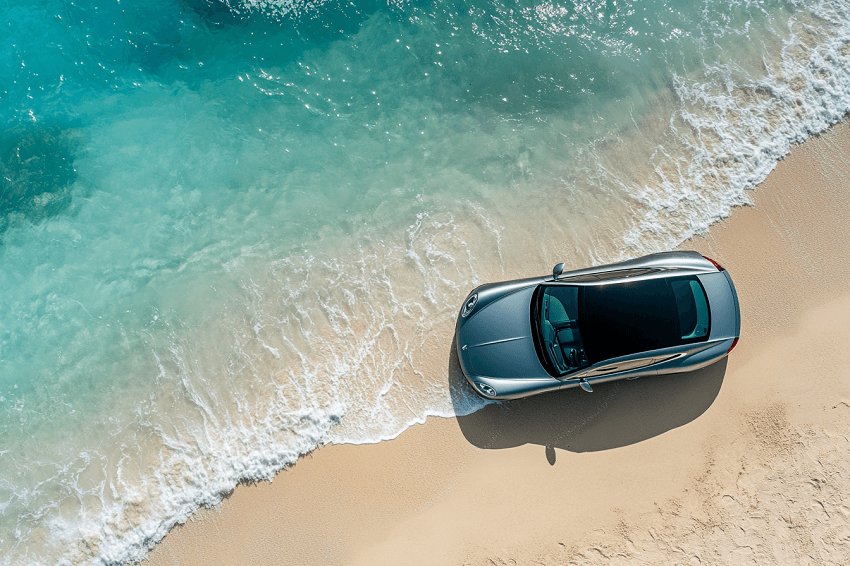
- Accurate subject separation with transparent details and fine edges in a click
- Produce smooth, gradient-based alpha edges for natural background blending
- Obtain the original quality. Upscale/enhance images to maximize quality with AI
- Provide an AI-powered brush for quick, easy, and flexible manual adjustments
- Bulk processing. Run entirely locally to ensure user data privacy and security
Car Photography Tip 1. Know Your Subject
Understanding the car you are photographing is crucial to capturing its essence and unique features. Before you even pick up your camera, take some time to research the vehicle. Familiarizing yourself with its make, model, and any significant historical context can provide valuable insights. Knowing what makes the car special—whether it's a classic with a storied past or a modern marvel of engineering—will help you approach your photography with a deeper appreciation for the subject.
Every car has distinctive design elements that contribute to its character. Pay attention to the lines and curves of the body shape, noticing how light interacts with different surfaces. The badges and logos can add a touch of personality and brand identity to your shots, while the choice of wheels significantly influences the overall look of the car. If you have access to the interior, focus on unique elements like dashboard designs, seat materials, and technology interfaces.
By knowing your subject inside and out, you can make informed decisions about how to frame your shots, what angles to use, and which features to emphasize. This knowledge not only enhances your photography but also allows you to tell a more compelling story through your images.

Car Photography Tip 2. Choose the Right Location
Selecting the right location for your car photography is essential to creating compelling images that enhance the vehicle's appeal. The backdrop you choose can either complement the car or distract from it, so it's important to consider your options carefully.
Start by looking for scenic backdrops that align with the car's style and character. For modern cars, urban settings with sleek architecture or vibrant street art can create a dynamic contrast that emphasizes the vehicle's contemporary design. On the other hand, classic cars often shine in natural landscapes, such as rolling hills, rustic roads, or picturesque coastlines, where they can evoke a sense of nostalgia and timelessness.
When scouting for locations, aim for areas that are free from clutter. Busy environments can distract from the main subject—the car—so look for clean backgrounds that allow the vehicle to stand out. An open field, an empty parking lot, or a quiet stretch of road can provide a perfect canvas for your shots. Additionally, consider the time of day when choosing your location; certain spots may look different under varying lighting conditions.
It's also worth exploring unique locations that tell a story about the car. For example, if you're photographing a rugged off-road vehicle, capturing it on a dirt trail or near a mountain range can reinforce its adventurous spirit. Conversely, if you're working with a luxury sports car, a sleek modern building or an upscale urban environment might be more fitting.

Car Photography Tip 3. Master Lighting Techniques
Lighting plays a pivotal role in car photography, transforming ordinary images into stunning works of art. Understanding how to harness different types of light can significantly enhance the quality of your photographs and highlight the car's lines, textures, and details.
Natural light is one of the most effective tools for car photography. The quality of natural light varies throughout the day, and shooting during the golden hour—shortly after sunrise or just before sunset—provides a warm and soft glow that beautifully enhances the car's curves and reflections. During this time, the sun is low in the sky, creating long shadows and a gentle illumination that can make your images pop. Conversely, midday sunlight tends to be harsh, but it can be used effectively by focusing on reflections and utilizing surrounding elements like trees or buildings to diffuse the light.
In addition to natural light, mastering artificial lighting techniques can provide you with greater control and consistency. Using studio lighting setups with multiple light sources allows you to achieve the desired effect in a controlled environment. For instance, employing softboxes can soften the light and reduce harsh shadows on the car's surface. Light modifiers like diffusers can also help eliminate unwanted reflections, particularly on shiny surfaces.
When working with artificial light, consider using techniques such as light painting. This involves using a continuous light source to illuminate parts of the car during a long exposure. By moving the light around, you can highlight specific details and create unique effects that add drama to your images.
It's also beneficial to experiment with different lighting setups. For example, direct frontal lighting illuminates everything facing the camera uniformly, while side lighting adds texture and emphasizes the car's lines. Subtractive lighting techniques can create depth by using dark materials to absorb excess light reflections on the car's surface.
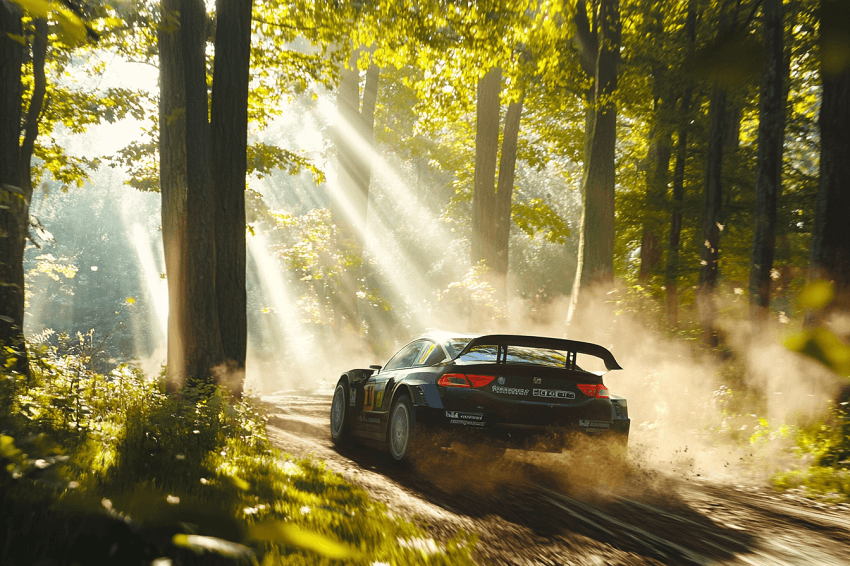
Car Photography Tip 4. Experiment with Angles and Perspectives
One of the most effective ways to elevate your car photography is by experimenting with different angles and perspectives. The way you frame a shot can dramatically change the viewer's perception of the vehicle, highlighting its design features and evoking emotions.
Start by exploring dynamic angles that can add depth and interest to your images. Low-angle shots, for instance, can emphasize the car's stance and make it appear more powerful and imposing. This perspective can also enhance the dramatic effect of the vehicle against a backdrop, such as a skyline or mountain range. Conversely, high-angle shots can provide a unique view of the car, showcasing its roofline and offering a broader context of the environment around it.
The classic three-quarter view is another popular choice among car photographers. This angle captures both the front and side of the vehicle, allowing you to showcase its curves and lines while providing depth to the composition. It often conveys a sense of motion and dynamism, making it particularly effective for sports cars or performance vehicles.
Don't hesitate to get creative with your perspectives. Try shooting from unusual vantage points—such as through the car's windows or from behind the vehicle—to create intriguing compositions that draw viewers in. You can also incorporate foreground elements, like plants or other objects, to frame the car and add layers to your images.
Additionally, consider using reflections to enhance your shots. Puddles, glass surfaces, or shiny buildings can create captivating mirrored images that add complexity and artistic flair to your photography. These reflections can also serve as a way to connect the car with its surroundings, further enriching the narrative of your image.
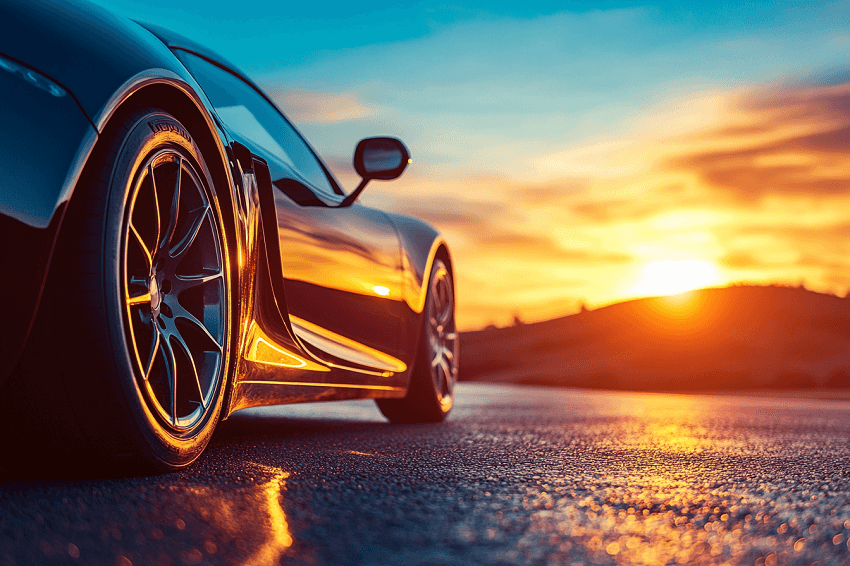
Car Photography Tip 5. Incorporate Motion
Incorporating motion into your car photography can add a dynamic element that conveys speed, excitement, and the thrill of driving. Capturing a vehicle in motion not only showcases its performance but also brings your images to life, inviting viewers to feel the energy of the moment.
One effective technique for capturing motion is panning. This involves using a slower shutter speed while following the car as it moves. By keeping the camera steady and tracking the vehicle's movement, you can create a blurred background that emphasizes the speed of the car while keeping it in sharp focus. This technique requires practice to master, but when done correctly, it results in striking images that convey a sense of action and dynamism.
Another approach to incorporating motion is to photograph cars in a setting that naturally suggests movement. For example, capturing a vehicle on a winding road or during a race can evoke feelings of adventure and excitement. Positioning yourself strategically along the route allows you to frame the car against dramatic landscapes or urban backdrops, enhancing the narrative of speed and freedom.
Static action shots can also effectively convey motion without requiring the car to be in motion. You can achieve this by using techniques such as blurring the background while keeping the car sharp or capturing it with an intentional tilt, known as "Dutch angle" photography. This technique adds a sense of dynamism and urgency to your images, making them feel more alive.
Additionally, consider using long exposure techniques during low-light conditions or at night. By using a slower shutter speed, you can capture light trails from other vehicles or streetlights, adding an artistic flair to your images. This method not only enhances the sense of movement but also creates visually stunning effects that draw the viewer's attention.
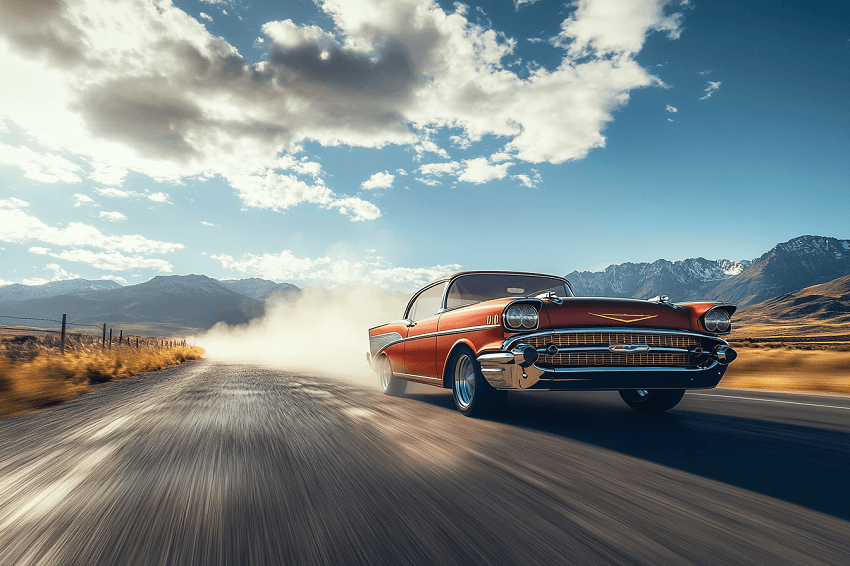
Car Photography Tip 6. Focus on Details
In car photography, the beauty often lies in the details. Capturing intricate features of a vehicle can provide depth to your images and tell a more comprehensive story about the car's design and craftsmanship. By honing in on specific elements, you can create striking compositions that highlight what makes each vehicle unique.
Start by exploring close-up shots that emphasize distinctive features. This could include the car's headlights, grille, wheels, or any custom modifications. These details often reveal the character of the vehicle and can evoke emotions or memories associated with it. For example, a close-up of a vintage badge can transport viewers back to a different era, while a modern sports car's sleek lines can convey a sense of speed and innovation.
Texture is another important aspect to consider when focusing on details. The contrast between materials—such as leather seats, polished metal, or carbon fiber—can add richness to your images. Pay attention to how light interacts with these surfaces; reflections and highlights can enhance the visual interest of your shots. Using a macro lens or a lens with a wide aperture can help isolate these details and create beautiful bokeh effects that draw attention to the subject.
Don't overlook the interior of the car, as it often contains unique design elements that deserve attention. Capture shots of the dashboard, steering wheel, or seat stitching to give viewers insight into the car's luxury or sportiness. These interior details can also tell a story about the car's intended use—whether it's designed for comfort, performance, or both.
Additionally, consider the context in which you present these details. Incorporating elements from the environment—like reflections in windows or shadows cast by nearby objects—can enhance your composition and create a more immersive experience for viewers.

Car Photography Tip 7. Utilize Composition Techniques
Composition is a fundamental aspect of car photography that can significantly influence how your images are perceived. By applying various compositional techniques, you can create visually dynamic and engaging shots that draw attention to the vehicle and enhance its appeal.
One of the most essential principles in composition is the rule of thirds. This technique involves dividing your frame into a grid of nine equal sections by drawing two horizontal and two vertical lines. Positioning the car along these lines or at their intersections creates a more balanced and interesting image. For example, placing the vehicle slightly off-center allows for a more dynamic composition, guiding the viewer's eye toward the car while leaving space for the surrounding environment.
In addition to the rule of thirds, utilizing leading lines can enhance your compositions. Leading lines are natural or man-made elements in the scene—such as roads, fences, or railings—that direct the viewer's gaze toward the car. Incorporating these lines can add depth to your images and create a sense of movement, making your photographs more engaging.
Framing is another effective technique that involves using elements within the scene to create a "frame" around the car. This could be achieved with tree branches, archways, or even reflections in puddles. Framing not only adds context to your images but also draws attention to the main subject, creating a more immersive experience for viewers.
Don't forget to consider orientation when composing your shots. Depending on the scene, you may choose landscape or portrait orientation to emphasize different aspects of the car and its surroundings. For instance, landscape orientation can highlight wide vistas or expansive roads, while portrait orientation might be better suited for emphasizing vertical elements like tall buildings or trees.
Lastly, take time to evaluate what elements you want to include or exclude from your frame. Carefully selecting which parts of the environment to feature can help eliminate distractions and keep the focus on the vehicle. If something in the background detracts from your composition, consider repositioning yourself or adjusting your angle until you achieve a cleaner shot.
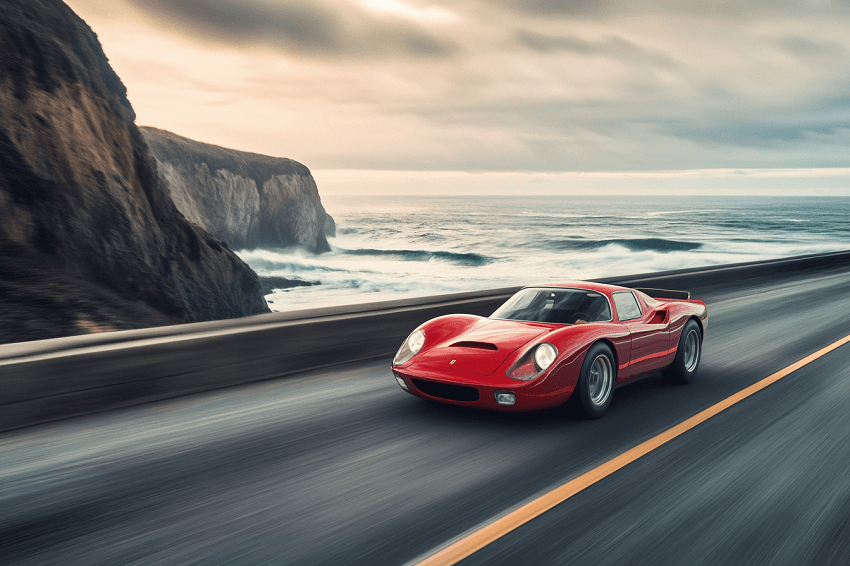
Car Photography Tip 8. Tell a Story
In car photography, the ability to tell a story through your images can significantly enhance their impact and engage viewers on a deeper level. A well-crafted narrative not only showcases the vehicle but also connects it to emotions, experiences, and the lifestyle it represents. By incorporating storytelling elements into your photography, you can create compelling visuals that resonate with your audience.
Start by considering the context of the car you are photographing. Think about its history, purpose, and the experiences it embodies. For instance, if you're capturing a vintage car, you might want to evoke nostalgia by placing it in a setting that reflects its era—like a classic diner or an old gas station. This not only highlights the car's design but also invites viewers to imagine the stories it has witnessed over the years.
Incorporating human elements into your shots can further enrich your narrative. Including the car's owner or a model interacting with the vehicle can create a sense of connection and provide context for the viewer. Whether it's someone admiring the car, getting in, or simply leaning against it, these interactions can convey emotions and add depth to your images.
You can also use a series of photographs to tell a more comprehensive story about the car. For example, capturing the vehicle from various angles and in different settings can illustrate its versatility and character. This approach allows viewers to experience the car in multiple contexts, enhancing their understanding and appreciation of its design and capabilities.
Consider using details to enrich your storytelling as well. Close-up shots of unique features—like custom modifications or interior elements—can provide insight into what makes this particular vehicle special. These details help create a more complete narrative that goes beyond just showcasing the car itself.
Finally, think about how you can evoke emotions through your imagery. Whether it's capturing the thrill of driving on an open road or the serene beauty of a parked classic against a sunset backdrop, your photographs should evoke feelings that resonate with viewers. Emotionally charged images are often more memorable and impactful.

Car Photography Tip 9. Practice Regularly
Regular practice is essential for honing your skills in car photography and developing your unique style. Like any art form, the more you shoot, the better you become. Consistent practice allows you to experiment with different techniques, refine your understanding of lighting and composition, and gain confidence in your abilities.
Start by setting aside dedicated time for photography, whether it's a weekend outing or a casual evening shoot. This commitment will help you stay engaged and motivated to improve. Consider joining local car meets or events where you can capture a variety of vehicles and interact with fellow enthusiasts. These gatherings provide excellent opportunities to practice your skills in dynamic environments while connecting with others who share your passion.
Experimentation is key during your practice sessions. Don't be afraid to try new techniques or push the boundaries of your comfort zone. Whether it's exploring unconventional angles, playing with different lighting conditions, or incorporating motion into your shots, each attempt will teach you something valuable. Review your work critically; identify what works well and what doesn't, and use this feedback to inform your future shoots.
Seeking feedback from peers can also accelerate your growth. Share your images with fellow photographers or online communities dedicated to automotive photography. Constructive criticism can provide fresh perspectives and insights that help you see your work through different lenses.
Additionally, studying the work of established car photographers can inspire and inform your own style. Analyze their compositions, lighting choices, and storytelling techniques to understand what makes their images compelling. Incorporating elements that resonate with you while maintaining your unique voice will help you evolve as a photographer.
Finally, remember that improvement takes time, so be patient with yourself. Celebrate small victories along the way and recognize that every photograph is an opportunity to learn. By committing to regular practice and embracing a mindset of continuous improvement, you'll not only enhance your technical skills but also develop a deeper appreciation for the art of car photography.

Car Photography Tip 10. Post-Processing Skills
Post-processing is a vital step in car photography that can elevate your images from good to exceptional. It's your opportunity to fine-tune colors, accentuate details, and bring out the full potential of your shots. Mastering post-processing techniques allows you to create polished and professional-looking photographs that truly showcase the beauty of each vehicle.
Begin your editing workflow with basic adjustments in software like Adobe Lightroom. Start by correcting exposure to ensure that your image is well-balanced between shadows and highlights. Adjusting the white balance is crucial for achieving accurate colors, while cropping can help refine your composition by removing distractions and focusing on the most important elements of the image.
Once you've established a solid foundation with these basic edits, you can move on to more advanced techniques in Adobe Photoshop. One common practice is to create a new layer for detailed work, such as enhancing edge details using filters like HighPass. This method sharpens the image without oversaturating it, allowing you to maintain a natural look while emphasizing key features of the car.
Incorporating tools such as cloning and healing brushes can help eliminate imperfections that might draw attention away from the vehicle. Whether it's smoothing out blemishes or removing unwanted reflections, these tools are essential for achieving a flawless finish.
As your skills progress, consider exploring color grading to unify the scene and evoke specific moods. This technique can give your images a refined and cohesive look, often used by professionals to achieve an ultra-cinematic effect. Additionally, employing techniques like dodging and burning can add dimensionality to the car, making it stand out even more against its background.
Don't forget about the power of vignetting; adding a subtle vignette can draw the viewer's focus toward the car while creating a sense of depth in your images. However, moderation is key—overdoing this effect can detract from the overall quality of your photograph.
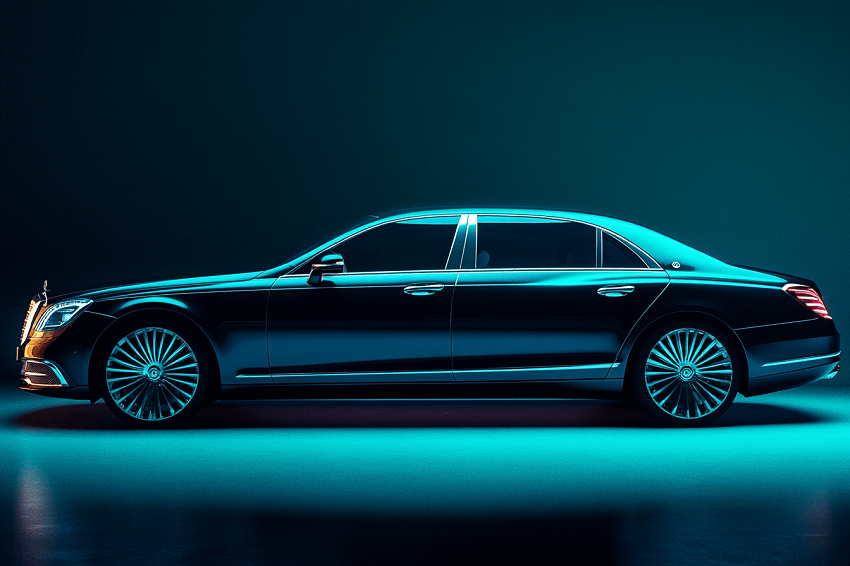
Conclusion
By implementing the tips discussed in this post—understanding your subject, choosing the right location, mastering lighting techniques, experimenting with angles, incorporating motion, focusing on details, utilizing composition techniques, honing your post-processing skills, telling a story, and practicing regularly—you can elevate your photography to new heights.
Each of these elements plays a crucial role in creating compelling images that resonate with viewers and capture the essence of the vehicles you photograph. Remember that photography is not just about technical skills; it's also about storytelling and evoking emotions. As you continue to explore this exciting genre, allow your passion for cars and photography to guide you.

